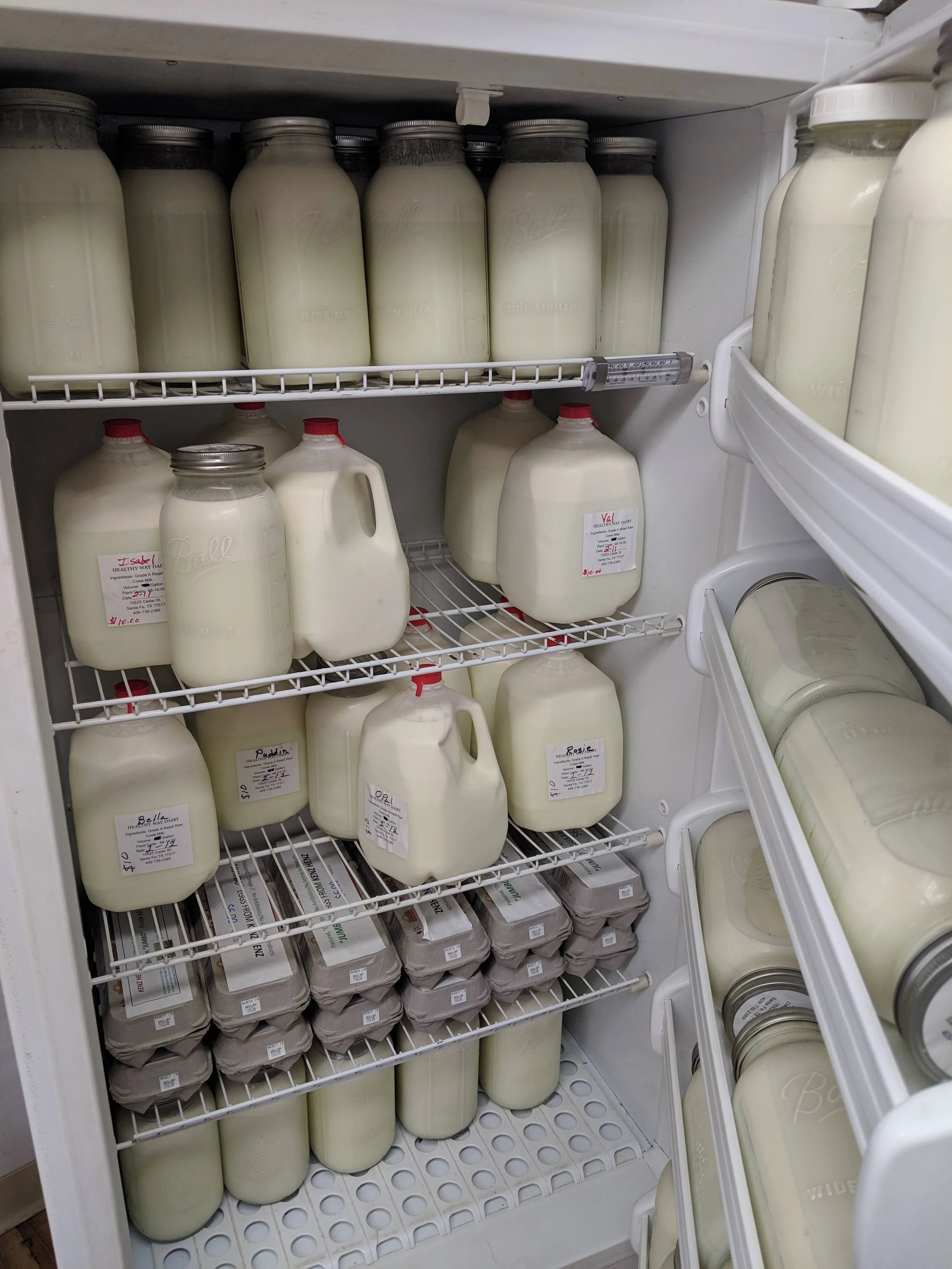9 Reasons Why We Love Raw (Real) Milk
As a real food enthusiast - I’m ALL ABOUT the recent uptick in people seeking out raw milk. When I first began drinking raw milk over a decade ago, people would gasp and utter misinformed statements like, “you can die from drinking raw milk!” But the truth is that there are far more risks from drinking pasteurized milk than unpasteurized milk. And, just like other food we source, quality is the most important part to pay attention to. So, when it comes to milk quality that means paying attention to the cow’s living conditions, environment, feed, and use of hormones and antibiotics.
Here are some fun evidence-based facts about raw milk that everyone needs to know —
Raw milk is nutrient-dense. Raw milk, and especially raw milk from pastured animals (the only raw milk worthwhile of consumption), is a great source of calcium, iron, Vitamins A, D & K, phosphorus, zinc, conjugated linoleic acid (CLA), and omega-3 fatty acids, plus many beneficial enzymes and probiotics that are healthy bacteria able to inhibit the growth of undesirable and dangerous organisms in the gut.
Raw milk is self digesting. Meaning, raw milk has all of the enzymes it needs to be digested by humans. If you are lactose intolerant, that means you’re lacking lactase, the enzyme necessary for lactose (the sugar found in milk) breakdown. Raw milk contains lactase! If you enjoy milk and have been avoiding it for this reason, you may find that you are able to have raw dairy products without complication.
Raw milk is immune-boosting. Raw milk contains immunoglobulins, specifically IgG, that support immune function. In fact, there are multiple studies that have shown raw milk consumption is correlated with improved immune system function. Raw milk has also been correlated with reduced risk of respiratory infections and fevers, as well as reduced risk of asthma and allergies.
Raw milk has a rich history in healing. An excerpt from a Weston A. Price article on the health benefits of raw milk highlights just how much healing history it has. “Since ancient times, physicians like Hippocrates, Galen, Pliny and Varro have used raw milk to cure a wide range of diseases. Hippocrates advised tuberculosis sufferers to drink raw milk in quantity. In the Ayurvedic medicine of India, milk is used in the practice of brimhana meaning to “buck up” or nourish the body. It’s also used in rasayana to rejuvenate the body and in vajikarana, to promote sexual function and fertility. Physicians prescribed raw milk as a gentle laxative, to cool inflammation of ulcerated tissues, and as a galactagogue to increase milk production for the nursing mother. In the U.S., raw milk was used for one hundred fifty years to treat a wide range of conditions and is still used today in some hospitals in European and other countries.”
Ever since the Industrial Revolution, we’ve been lead to believe that raw milk is unsanitary and unsafe for drinking. With an open and curious mind, you will come to find that is not the truth.
You may be wondering, what’s wrong with conventional milk?
Here are some evidence-based facts about conventionally-raised, pasteurized, conventional milk that everyone needs to know —
Conventional milk is not self-digesting. During the pasteurization process, enzymes necessary for the digestion of milk are deactivated and rendered useless. This means that digestion is now solely dependent upon the consumer’s ability to produce enzymes, specifically lactase. According to studies, “an estimated 70-75% off the world's population is lactose-deficient. Lactose intolerance is very common among Asian, South American, and African persons. Lactose intolerance also appears to have a higher prevalence in patients with diarrhea-predominant irritable bowel syndrome (IBS-D) than healthy individuals.”
Conventional milk is pasteurized or ultra-pasteurized. Pasteurization is a process of heat treating milk to kill bacteria. A process originally developed for beer and wine, it made its entrance into the dairy industry in the late 1800s as a temporary solution until rundown urban dairies could find a way to produce cleaner milk. But, as milk became more mass produced, pasteurization became a means for larger dairies to cover up dirty milk in effort to increase their profits. So, the public then had to be convinced that pasteurized milk was safer than raw milk. This was accomplished by blaming raw milk for all sorts of diseases and outbreaks until the public was finally convinced that pasteurized milk was superior to milk in its natural, unprocessed state.
Conventional milk is nutrient-poor. Remember all of those nutrient-dense benefits we mentioned above for raw milk? Consider those null and void when milk is heat treated. Pasteurization destroys friendly bacteria, beneficial enzymes for nutrient absorption, antibodies and hormones. It also diminishes fat soluble Vitamins A, D, and E along with Vitamin C, and completely destroys Vitamins B6 and B12! The dairy industry is aware of pasteurization’s impact on nutrient density and tries to rectify the problem by fortifying milk with a synthetic form of Vitamin D.
Conventional milk is linked to disease. Considering how modern commercial milk is produced and processed, it’s no wonder that millions of Americans are allergic or sensitive to it. An allergic reaction or sensitivity to dairy can cause symptoms such as diarrhea, vomiting, stomach pain and cramping, gas, bloating, nausea, headaches, sinus and chest congestion, and a sore, or scratchy throat. Advanced health conditions linked to conventional milk can include asthma, atherosclerosis, diabetes, chronic infections (especially upper respiratory and ear infections), obesity, osteoporosis and cancer of the prostate, ovaries, breast and colon. I have a firsthand experience of asthma attacks related to conventional milk intake and see these other symptoms in my 1:1 nutrition coaching clients every day. It’s not uncommon for the removal of conventional dairy from a person’s diet to have a significant impact on how they feel.
Conventional milk promotes inflammation and contains more herbicides than plants. A cow’s natural diet consists mostly of grass, but it’s uncommon for factory farm cows to have access to green pastures. Instead, the diet of conventionally raised cows consists of grain, corn and soy, which has two major impacts. One, these foods shift the nutritional composition of milk to be pro-inflammatory. Two, corn and soy receive 80 percent of all herbicides used in the US! When we think of pesticides, we usually think of produce, but animal products can contain up to 14 times more pesticides than plants!
Like humans, animals need open spaces to roam, fresh air to breathe, sunlight to bask in, and an abundance of nutrients to thrive and be healthy. When animals are raised in conditions such as confined spaces without access to natural environments for roaming and grazing, they are vulnerable to becoming sick. To their misfortune, conventionally raised cows that turn sick are given heavy doses of antibiotics and other drugs that can, along with pesticides, end up in the milk of their dairy products. Furthermore, other unwanted toxins can end up in dairy, too, such as aflatoxins from moldy grain and undigested protein from soy. To top it off (and not in a desirable way), levels of Vitamin A and D drop drastically in cows fed anything other than green growing grass. Talk about laying the foundation for autoimmunity and other chronic symptoms!
As a registered dietitian, I’ve been studying and practicing functional nutrition for over a decade and have seen the nourishing power of raw milk first hand in hundreds of clients. On a personal note, I’ve been consuming raw dairy products as a prior asthmatic for the past ten years without any airway issues whatsoever. Once you glean insight into modern milk, it seems logical to avoid it altogether. However, real and raw milk that’s sourced from pasture-raised cows contains vital nutrients, is a complete protein, contains self-digesting enzymes, and is jam-packed with beneficial bacteria that contribute to a healthy gut flora and strong immune system.
If you’re intrigued and want to try out raw milk, you can visit www.realmilk.com to find farms and milk co-ops near you.
Rosie & Opal were my favorite gals!
References:
- https://www.realmilk.com/milk-as-medicine/
- https://emedicine.medscape.com/article/187249-overview
- https://www.westonaprice.org/health-topics/making-it-practical/milk-it-does-a-body-good/#gsc.tab=0
- Nutrition News and Views, Nov/Dec 1999, Vol 3, No.6, p. 2.
- The Next Bad Beef Scandal?” US News & World Report, September 1, 1997.
- Nutrition News and Views, Nov/Dec 1999, Vol 3, No.6, p 2.
- Mark Kastel, Down on the Farm: The Real BGH Story- Animal Health Problems, Financial Troubles,” published by Rural Vermont, 1991.
-Andrew Christiansen, Recombinant Bovine Growth Hormone: Alarming Tests, Unfounded Approval: The Story Behind the Rush to Bring rBGH to Market,” published by Rural Vermont, 1991.
- http://www.hfa.org/.

